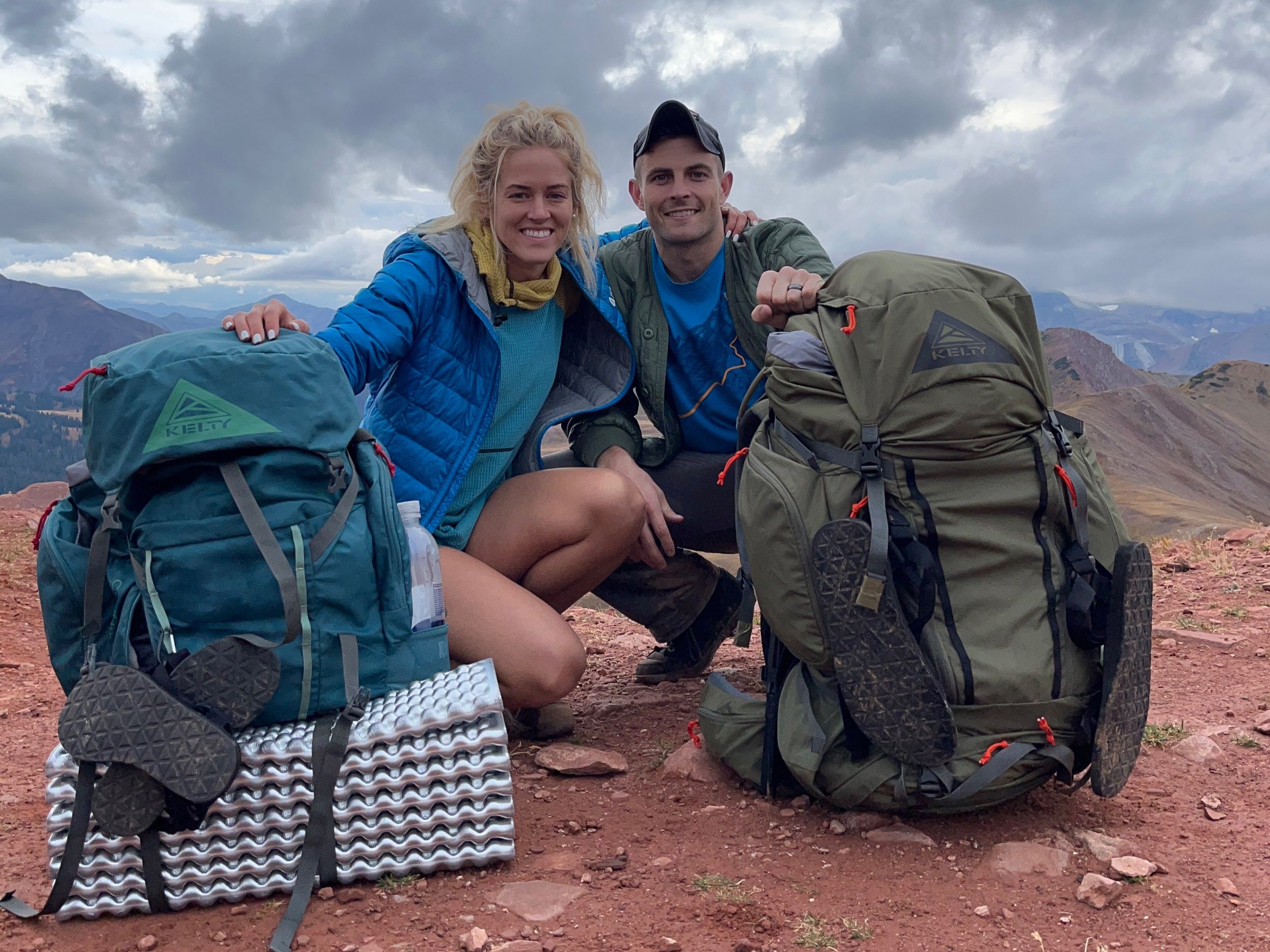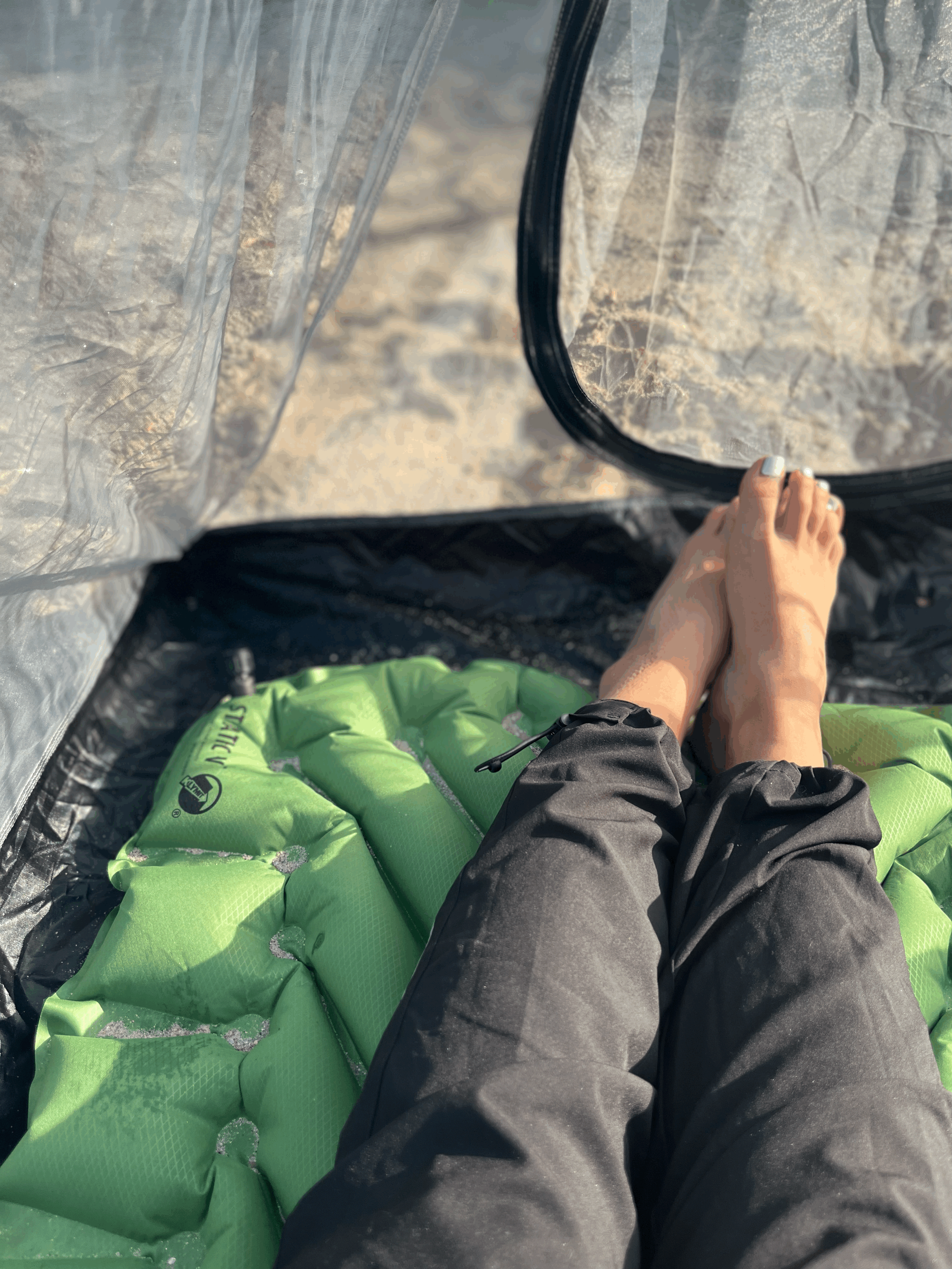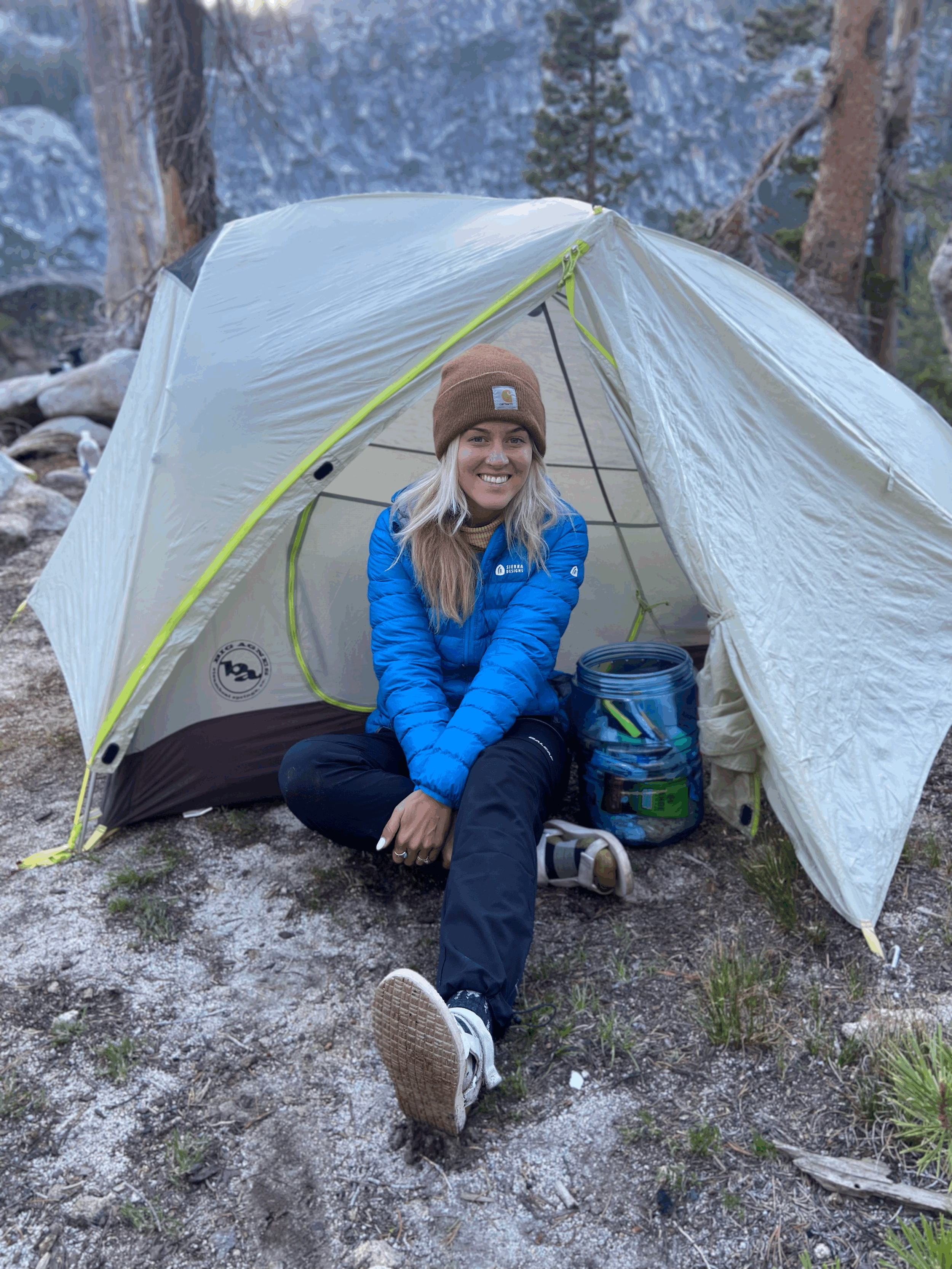Backpacking Checklist
Ever seen incredible photos from someone who went on a back-country trip and wanted to go on one yourself but had no clue what you need or what kind of gear is right? Well I’m going to break it down on a check list for you and talk through what exactly you would need to be safe and enjoy a weekend trip!
This is you’re complete guide to packing for a backpacking trip, I will share everything I personally use and give you commonly loved options as well! Feel free to tailor to your own needs and your own gear available but I suggest trying to stick to only the essentials and you’ll quickly realize how little you actually need out there!
Note: This post links to and references some affiliate partners. I only recommend products I truly love, and greatly appreciate your support!
The Big 4 Essentials: Backpacking Checklist
Tent or Bivy
Sleeping Bag or Quilt
Sleeping Pad
BackPack
Choosing Your Backpacking Pack
This pack is going to have to carry everything you need for 3-5 days. Therefore you’re going to need a much larger one than your regular day hiking pack. I would suggest anything between 50L-70L for a backpack. You want a balance between light weight and comfortably. One thing to remember is that you’ll pack less if you have less space, and you’ll be much happier carrying less weight, I often find when I have a bigger pack I over pack,
1-3 days of backpacking you can get away with 30-50 liters of space
3-5+ days of backpacking you would need more around 50-70 liters of space
Affordable and comfortable pack for weekend/week trips
My husband(he has the 85liter) and I (I have 60liter) both have this pack in photo above*
Commonly Used and loved by beginners/intermediate backpackers
Commonly seen and used by Ultra light backpackers
Backpacking Tent
Goodbye to your four person stand up spacious tent. This is not your Memorial Day car camping tent.
I was once told by an experienced backpacker that you shouldn’t carry more than 2.5lbs per person for your tent. This isn’t always possible, but I like to think if my two person tent is 4-5lbs that’s good. And if my 1 person tent is 3ish lbs i’ll be okay. Always try to go for the lower weight on these heavy items.
1 person tent
Kelty Late Start
my Current tent for solo trips
2 Person tent options
Featherstone UL Granite (cheapest/light option)
Kelty Grand Mesa (middle price/ middle weight)
REI Co-op Quarter Dome SL (more expensive/lightest weight)
Klymit Static V shown above
Choosing a Sleeping Pad
There are so many options for sleeping pads.
Ive Personally used Klymit Static V , Sleepingo, Therm-a-rest Polite Apex, Therm-a-rest Z lite Sol, and decided light weight and comfortability is Sleepingo with the Therm-a-rest lite Sol at the same time.
When picking a sleeping pad it’s important to plan what type of temperatures you’re likely to camp in. That will help you pick the right pad. For example summer and warm weather backpacking, a light weight blow up pad is perfect(to note those are more likely to leak if not taken care of properly) If you’re more of an all temps kind of backpacker you’ll want more of a closed cell pad that has insulation. I sleep on my side and backpack into low 30 degree night temps a lot. For my needs I decided a light weight air filled on top of the folded closed cell pad was worth the extra space/weight for me.
Summer, Air filled sleeping pads
Insulted sleeping pads
Closed cell options
The Therm-a-Rest Z Lite is my favorite so far. It’s durable and very light. Yes it’s big and you’ll have to carry it on the outside of your pack, but it won’t pop and you never have to blow it up after a long day of hiking. Bonus it doubles as a great chair and place to sit for lunch.
Sleeping Bag
This is something you’ll really wanna invest in. Not only does it have to be reasonably small it has to keep you warm up in the mountains. You aren’t car camping anymore and bringing all those extra blankets isn’t gonna work. I personally always prefer a down sleeping bag that can stuff small when needed. You’ll have to decide if you need more warmth or if you sleep pretty warm naturally. Ive used a Hyke and Byke Sleeping bag for the past 4 years on the AZT, TRT and multiple other trips. Its perfect for all types of trips. I am always cold so 0-15 degree is good for me. I also am often camping when its cold out which is another reason I chose a low rated temp. For women, I would always suggest a 15-25 degree bag with a Sleeping bag liner when needed. Camping in the warm summer heat I have a Kelty Cosmic 40 degree light weight sleeping bag.
Hiking boots or Sneakers
There is a lot of debate on whether hiking boots or hiking sneakers are better. I hike a lot in mud and snow, so I wanted to stick with something more insulting. Hiking Sneakers have a lot of pros and slowly becoming a backpacking necessity. I personally haven’t switched over due to the type of terain I am often in. If I lived on the west coast or a place that was a little dryer than New York trails I would highly consider just weather trail shoes.
The boots I currently wear:
Trail shoes that are often recommended for hiking
(Available in mens and women options)
Trekking poles
Trust me they help so much, and your knees will be grateful!
Shown in photo using Jetboil Zip
Cooking system
If you’re on a tight budget or think you’ll barely go backpacking again… This Cooking system does the job, I used it my first 2-3 trips. It isn’t great if there is any wind or if you’re trying to be super quick. There is also a higher chance of the pot on it knocking over because its not attached to the stove.
I currently use a Jetboil zip cooking system and its the most efficient way i’ve found to boil water. the top is connected to the burner so it is secured better then the two separate ones.
Budget Friendly
Most Efficient
Water filter system
You need water. Lots of water, and someday i’ll write a post strictly about staying hydrated for hiking; but for now just remember to keep sipping. I personally love the Katadyn brand, I have used both their pump and their squeeze filter and think they are great. I have even used it for multiple people on one trip and they flow super well. I always bring iodine tablets for back up if the filter ever gets clogged mid trip.
Water bladder or bottles
I used to swear by this water bladder. It was all I ever thought I needed. Recently i’ve moved over to 2-3 1 liter reusable plastic bottles from the gas station(I reuse for a long time). I found them so much easier to fill up while on the trail. I didn’t need to unpack and repack my bag every time we stopped for water. I also liked that I could add hydration to one bottle while not ruining the rest of them. I also have confidence in the fact that bottles weren’t going to pop and if one did, I still had 2 more. But the pros of a water bladder are still pretty high for a lot of people and I would say both are good options!
Bear canister and Bear Spray
Some places require a bear canister because of the bear activity in that area. Something you should take seriously, if there’s a chance a bear could take your food from a bear bag or from your tent and run the risk of you getting hurt or having no food the rest of the trip, take a bear can. No, some places do not require them and I don’t use mine in states that don’t have bears. But for bear spray I take it any time i’m on a solo trip, bear country or not.
Peep the two water bottles I often use
The Right Clothes
These should be moisture wicking materials(wool/synthetics are best for base layers), not your usual cotton t-shirts and thick hoodie or sweat pants. The main reason is that those materials do not dry quick after maybe a fall in the stream or a lot of sweating. Therefore if it can trap moisture and it can also freeze with cold temperatures. We are trying to wick away moisture and have it dry fast.
Hiking Pants
I Prefer to hike in light weight hiking pants, Baleaf has the best pair I’ve found so far! I size down because they come a little baggy. but they dry so fast and are so cute.
Shorts
I love hiking in biker shorts or light weight quick drying shorts and having the ability to wear my pants over them
Light weight moisture wicking hiking tops for summer
Choose the lightest thinnest synthetic shirt you can find, I thrift for them or this is my go to long sleeve
Mid Layer
Should be insulted and breathable I love a Melanzana hoodie or a Mountain hardwear micro hoodie. They are great insulation and cozy for cold evenings and mornings.
Puffy Jacket
This one is your warmest. I go with a Down filled option usually. Marmot has good options, Eddie Bauer, Patagonia as well, I personally wear a Sierra Designs Puffy. You really can’t go wrong if you’re just getting into backpacking. A lot of down jackets do the job.
Rain/wind shell
I always bring this layer, rain or no rain. They can pack down small and they create a ton of warmth when worn over your layers in the evenings or the early morning chill. If you’re in a state that is always rainy make sure to not skimp on the quality.
Extra socks
Darn Tough and Smart Wool are both my to go options.
Beanie or gloves if in cold temps
Underwear (because some people need to be reminded about those)
Small Essentials list
Also Biodegradable tooth paste! Deva cup for periods are great! otherwise pack it all out!
Food and Snacks
A headlamp and extra batteries
Phone and phone charger (optional)
Pro tip - Always have your phone on airplane mode while in the mountains. 99% of the time you won’t have service and this will save your battery ten fold. And make sure to bring a good charger along with you. You’ll want to have a working phone for all the pictures.
Grab the lightest cheapest pair or go with these Tevas
Map and Compass
Kitchen utensils (spork and Mug)















